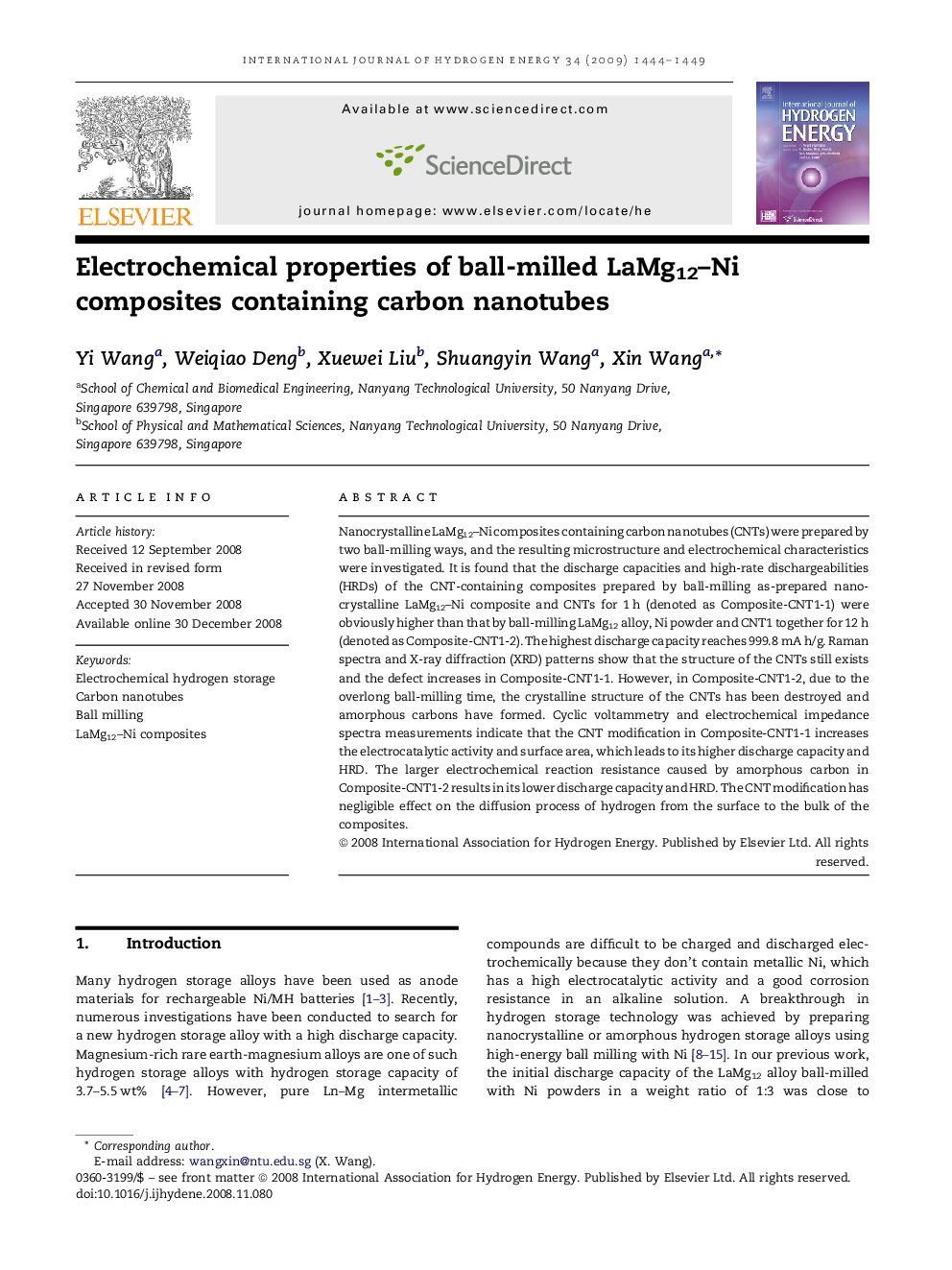| Article ID | Journal | Published Year | Pages | File Type |
|---|---|---|---|---|
| 1283356 | International Journal of Hydrogen Energy | 2009 | 6 Pages |
Nanocrystalline LaMg12–Ni composites containing carbon nanotubes (CNTs) were prepared by two ball-milling ways, and the resulting microstructure and electrochemical characteristics were investigated. It is found that the discharge capacities and high-rate dischargeabilities (HRDs) of the CNT-containing composites prepared by ball-milling as-prepared nanocrystalline LaMg12–Ni composite and CNTs for 1 h (denoted as Composite-CNT1-1) were obviously higher than that by ball-milling LaMg12 alloy, Ni powder and CNT1 together for 12 h (denoted as Composite-CNT1-2). The highest discharge capacity reaches 999.8 mA h/g. Raman spectra and X-ray diffraction (XRD) patterns show that the structure of the CNTs still exists and the defect increases in Composite-CNT1-1. However, in Composite-CNT1-2, due to the overlong ball-milling time, the crystalline structure of the CNTs has been destroyed and amorphous carbons have formed. Cyclic voltammetry and electrochemical impedance spectra measurements indicate that the CNT modification in Composite-CNT1-1 increases the electrocatalytic activity and surface area, which leads to its higher discharge capacity and HRD. The larger electrochemical reaction resistance caused by amorphous carbon in Composite-CNT1-2 results in its lower discharge capacity and HRD. The CNT modification has negligible effect on the diffusion process of hydrogen from the surface to the bulk of the composites.
